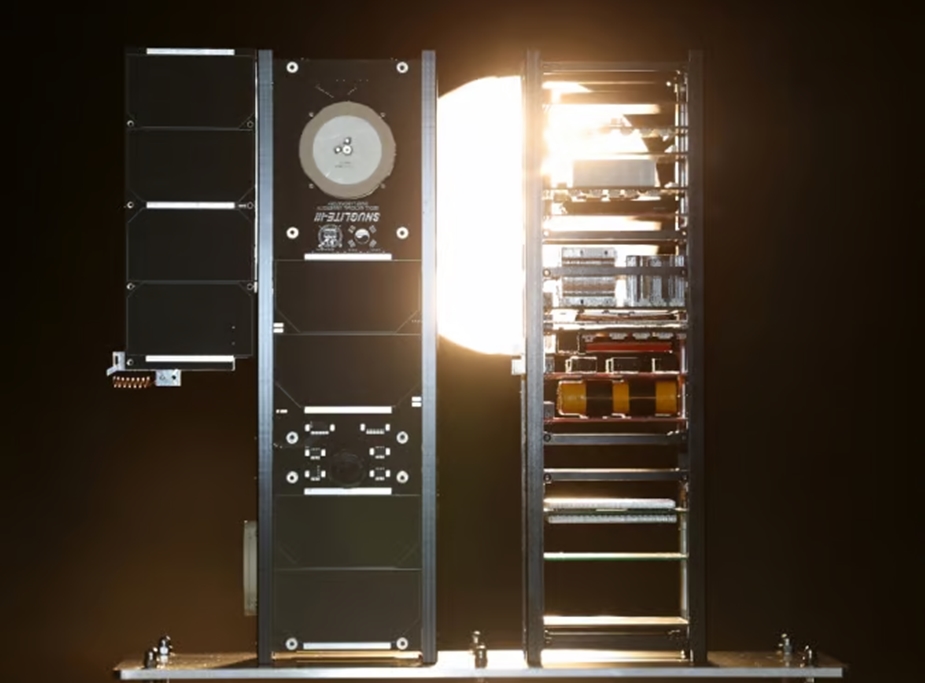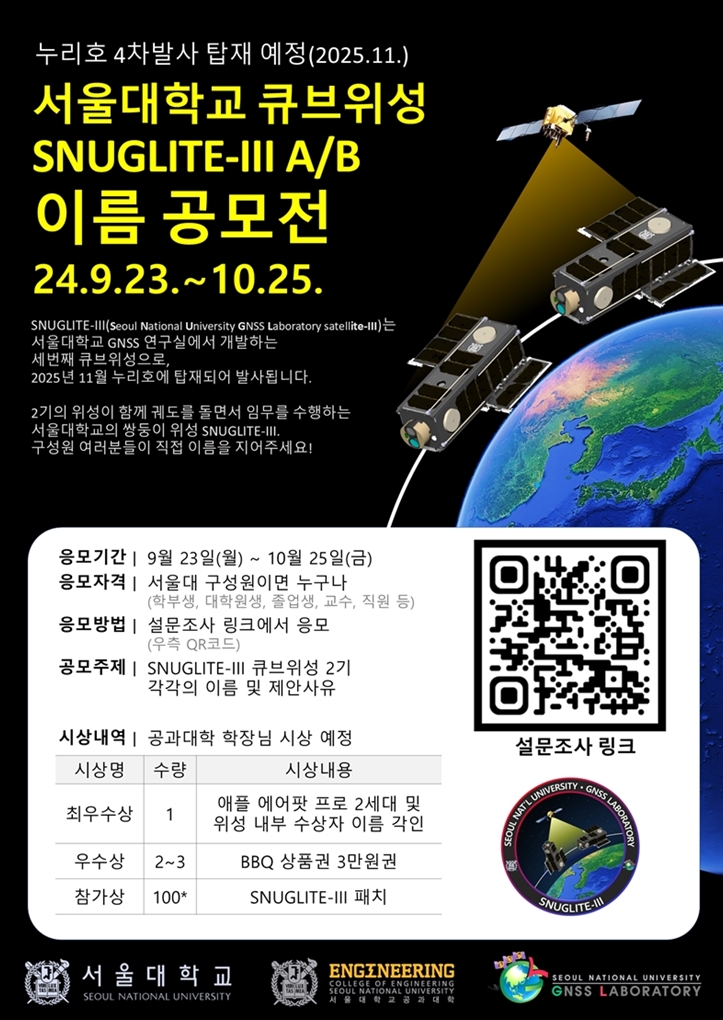
“SNUGLITE-III,”(tentative name) developed by the GNSS Laboratory at Seoul National University's Department of Aerospace Engineering, has been selected as a science mission cube satellite in the 2022 Cube Satellite Competition, organized by the Korea Aerospace Research Institute (KARI). It is slated for launch aboard the fourth flight of Korea's Nuri rocket in November 2025.
SNUGLITE-III consists of two ultra-small cube satellites, each weighing around 3 kg, shaped as cubes. These satellites will orbit space, ccarrying out a 3D atmospheric observation mission. A highly advanced technique will be used in which the two satellites maintain a set distance and travel together in space without thrusters, utilizing the aerodynamics of the sparse atmosphere.
Through this world-first technology developed by Seoul National University, the cube satellites will orbit Earth, collecting ultra-precise GPS big data. Using 3D tomography (GPS Radio Occultation), they will acquire high-resolution atmospheric data on temperature, pressure, humidity, and more from around the globe. Most current atmospheric observatories are land-based, leading to limitations in data collection centered on land. However, if this cube satellite mission succeeds, data on atmospheric elements in ocean regions and at various altitudes will be collected, significantly improving the accuracy of weather forecasting.
Additionally, key technologies required for operating cluster satellites—such as centimeter-level ultra-precise GPS relative navigation and docking—will be tested in space for the first time on a cube satellite.
To officially name the fifth cube satellite developed by Seoul National University, the College of Engineering is holding the "SNUGLITE-III Cube Satellite Naming Contest" for its members from Monday, September 23 to Friday, October 25.
This contest allows undergraduates, graduate students, alumni, faculty, and staff of Seoul National University to name the twin cube satellites, previously referred to as ‘SNUGLITE-III A/B,’ fostering a sense of ownership and garnering both internal and external interest in the twin satellites. One person will be awarded the Grand Prize, 2-3 will receive the Excellence Prize, and 100 will be selected for the Participation Prize, each with corresponding awards. Notably, the Grand Prize winner’s chosen name will be engraved inside the satellite.
Professor Kee Changdon, from the Department of Aerospace Engineering and the head of the SNUGLITE team, said, “We plan to store the names of all participants in the satellite, symbolizing the idea of forever leaving their name in space to illuminate it for good. We hope that many university members will participate in the contest and become pioneers in the history of the space industry by directly naming the cube satellites."
In the future, the SNUGLITE team plans to continuously share information regarding the satellite's mission, development progress, launch, and operation results through a dedicated website.
[Press Inquiries]
Professor Kee Changdon, Department of Aerospace Engineering, Seoul National University / kee@snu.ac.kr / 02-880-1912
Researcher Hwang Jaewoong, Department of Aerospace Engineering, Seoul National University / pjy05016@snu.ac.kr / 02-880-8052

Translated by InKyung Bae
(Department of English Language and Literature)

